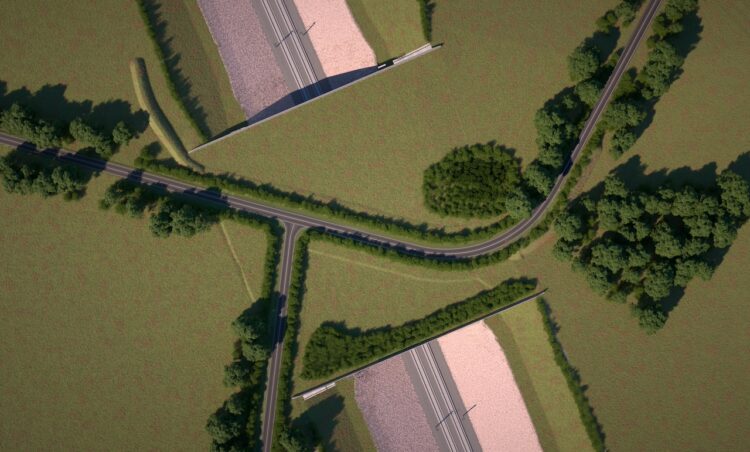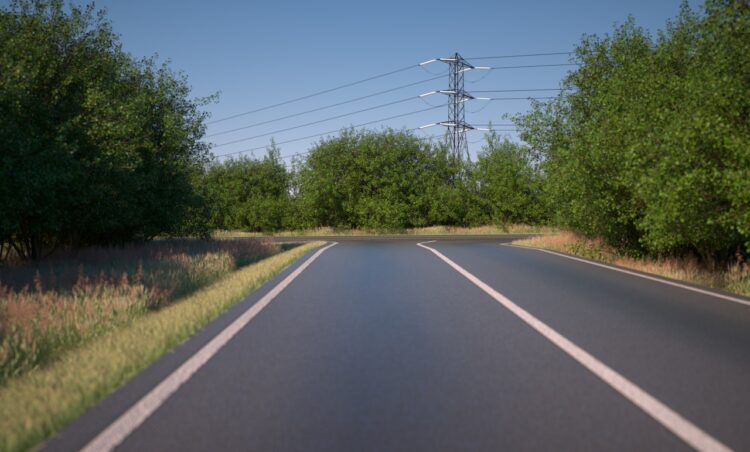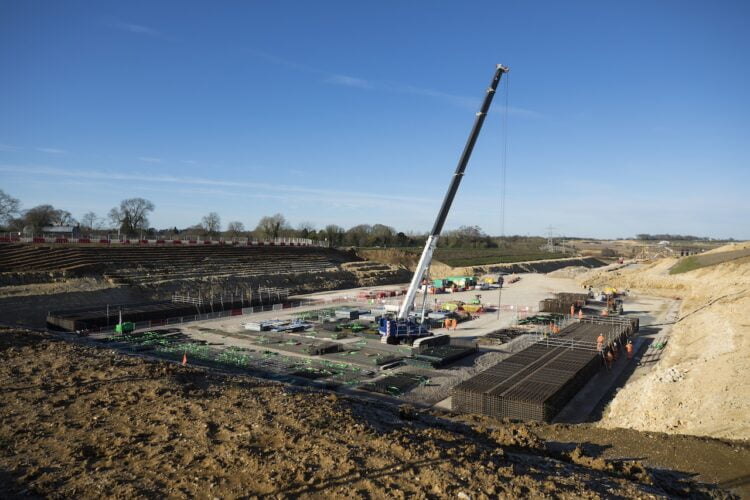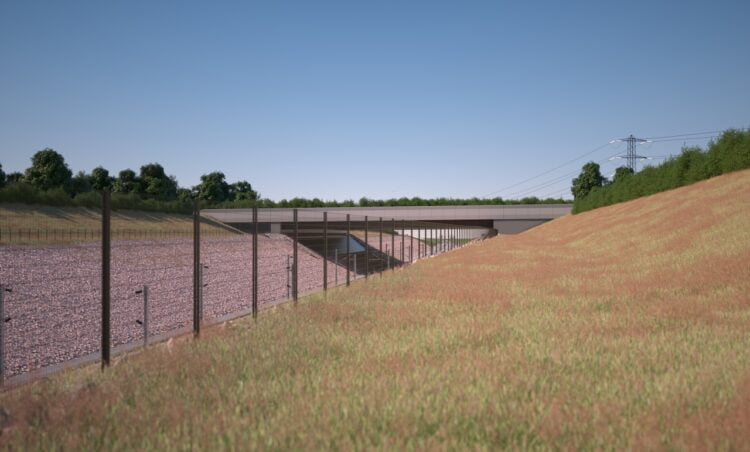Images have been released by HS2, which reveal the appearance of the largest ‘green bridge’ for the project which will be located across the new railway at the village of Turweston in north-west Buckinghamshire.
Green bridges are a common site throughout Europe and can be found crossing both railways and motorways, providing birds, mammals and insect life protection alongside ‘green tunnels’ which keep countryside views clear whilst reducing noise and disturbance for those living locally.
The bridge has been designed by HS2’s main contractor EKFB (Eiffage, Kier, Ferrovial Construction and BAM Nuttall), design partner ASC (Arcadis Setec and COWI) and specialist architects Moxon.

The structure will be a massive 99 metres in width and will not only support local wildlife with the planting of hedgerows and vegetation, but will also carry a local road, footpath and bridleway across the railway.
The impressive bridge will be made up of:
- 36 Steel beams
- A deck made up of pre-cast concrete slabs
- 2,700 cubic metres of earth, which will be landscaped with hedgerows, shrubs and vegetation
Thanks to design optimisation, the bridge has also seen a 42% reduction in its carbon footprint, which has been achieved by using carbon-intensive concrete and steel, alongside the removal of 102 deep piles in favour of shallow foundations.
The high-speed rail project is also aiming to reduce the delivery of construction materials by road by using rail freight instead, which is helping to offset carbon emissions, especially in Buckinghamshire, Oxfordshire and West Northamptonshire.

The cutting which the bridge will eventually cross marks one of HS2’s longest and deepest, running for 1.5 miles past the village.
Work on the excavation of the cutting is making good headway alongside work on the bridge foundations, the assembly of the structure’s steelwork is set to get underway later in the year.
Overall, the HS2 project will see 16 green bridges built with the majority supporting combinations of local roads, footpaths and farm access, alongside 5 green tunnels, some of which will be 1.5 miles in length.
The creation of these structures will connect 33 square kilometres of new wildlife habitat next to the railway and will involve the planting of 7 million new trees and shrubs.

Green bridges are still rare in the UK and just one example of how HS2 is leading the way in terms of innovation and environmental protection. The bridge at Turweston will help keep communities connected, while supporting wildlife and biodiversity on either side of the railway.
Once complete, HS2 will deliver faster, more reliable journeys between London and Birmingham – while freeing up space on the existing mainline for more local trains. But it’s also important that we deliver on our environmental commitments, which is why Turweston’s green bridge is so important.
Elizabeth Longinotti, HS2 Ltd Senion Project Manager

The earthworks programme between Turweston and Greatworth includes some of the largest cuttings on the HS2 project. One of the deepest and largest in terms of volume is the cutting at Turweston.
To ensure connectivity isn’t lost for our local communities and the areas ecology, this well-thought-out over-bridge is designed to connect both sides of the cutting and is still in keeping with its environment – boasting a landscaped area to blend into its surroundings.
The team has also done a tremendous job in finding innovative ways to reduce the carbon output of this structure; through our value-added engineering practice, we have reduced the number of piles required by adopting shallower foundations. This has benefitted the delivery programme and reduced costs – we’re really pleased with this outcome. We look forward to seeing the structure come to life when its steel beams arrive in the summer for the next phase of construction.
Tony Wehby, EKFB Project Director






Responses